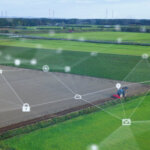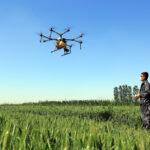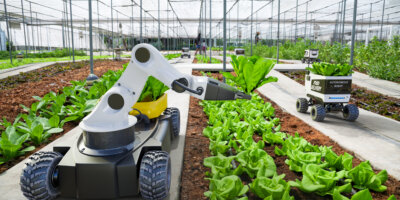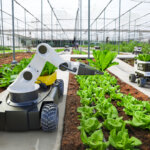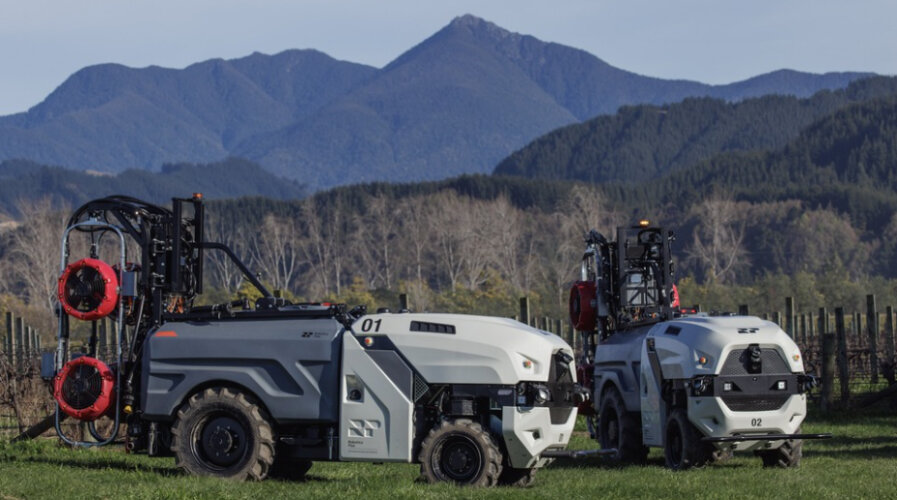
Prospr vehicles can accommodate multiple swappable tools for various use cases.
New Zealand to use multi-purpose autonomous vehicles in vineyards
- Autonomous vehicles in agriculture are making things easier for planters.
- Robotics Plus, a New Zealand-based agritech company, has launched Prospr
- Prospr is an autonomous, multi-use, hybrid vehicle that carries out various orchard and vineyard crop tasks.
Autonomous vehicles have found many use cases in warehouses, manufacturing facilities, and even in logistics. The technology can be quickly adopted and customized to a business requirement in these controlled environments.
While autonomous vehicles for passengers on the road are only in their infancy, the technology is innovating fast, with more capabilities being enabled regularly. But apart from that, autonomous vehicles have now found themselves in a new area which they may be able to serve.
The agricultural industry has seen a lot of innovation in recent years. Agritech, the use of technology in the agricultural industry, continues to see new use cases being developed. The most common use cases currently are machinery and blockchain technology to improve the supply chain and crop management.
In New Zealand, one company wants to bring autonomous vehicles into orchards and vineyards to automate some processes and promote sustainability. Robotics Plus, a New Zealand-based agritech company, has launched Prospr, an autonomous, multi-use hybrid vehicle designed to carry out various orchard and vineyard crop tasks.
Able to work more efficiently and sustainably while reducing reliance on labor, Prospr is now commercially available from Robotics Plus, a specialist in the design and build of innovative agricultural robotics.

An operator using a multi-purpose autonomous vehicle.
Autonomous vehicles in agriculture
Autonomous vehicles have been in agriculture for some time. But they’ve been mainly used for crop harvesting, plowing land, etc. Prospr differs from the rest because it can accommodate multiple swappable tools for various use cases.
This includes tools like grapes, apples, or tree corps tower sprayers. A planter just attaches the right tool for the day’s work. Multiple Prosprs can also collaborate in a fleet to complete the job faster.
Prospr accommodates multiple swappable tools being developed, including newly released tower sprayers for grapes, apples, or tree crops. The right tool for the job is attached to the vehicle depending on the work, and multiple Prosprs can collaborate in a fleet to get the job done. The autonomous vehicle uses a combination of perception systems to sense the environment, enabling data-driven insights.
According to Steve Saunders, co-founder and chief executive at Robotics Plus, the agriculture industry faces unprecedented challenges as this generation works to produce more food sustainably while reducing emissions and supplying at a lower cost.
“Prospr is a robust autonomous vehicle with all-day running that adapts to the jobs growers need to do while reducing emissions, inputs, and reliance on increasingly hard-to-find machine operators. We’ve focussed on utilization and flexibility with a unique modular architecture, allowing different tools for various crop types and applications year-round to maximize return on investment.
Dr. Alistair Scarfe, Co-founder and Chief Engineering Officer at Robotics Plus, pointed out that they’ve made multiple technology advances for Prospr, including a remodeled platform for tools, new spraying attachments, and a new user interface to aid management and planning.
“We’ve also improved machine connectivity, control, safety, and localization. Prospr has its wireless network, keeping vehicles online and enabling software updates for new features. We’re proud to release another world-leading robotic innovation to market, thanks to the expertise of our outstanding team and partners,” he said.

Steve Saunders, Co-founder and Chief Executive at Robotics Plus and Dr. Alistair Scarfe, Co-founder and Chief Engineering Officer at Robotics Plus.
How does Prospr work?
Built with an all-electric drive system for superior torque and control, Prospr’s onboard power generation, with a Tier 4 diesel generator, allows the vehicle to operate for extended periods without charging or refueling. Regenerative braking and high-capacity batteries extend range while its intelligent all-wheel-drive system with independent wheel motors gives superior maneuverability, grip, and control.
Regarding high carbon emissions from the diesel generator, Dr. Scarfe adds, “We’ve put our hybrid power and drive system through its paces and can achieve over 70% reduction in fuel consumption when compared to traditional diesel tractors doing the same job.”
Other features of the multi-purpose autonomous vehicle include its unique steering configuration, incorporating electric steering and independent motors. The vehicle turns on its rear axle with a minimum headland requirement of 7.1m/23ft for row-to-row turning. This means that ground is covered faster, maximizing productivity and spray time compared to machines that turn on every second row or greater. The vehicle’s lightweight design, combined with its unique tire and wheel configuration, reduces ground compaction.
“We’ve delivered a highly adaptable modular vehicle and are partnering with industry leaders to deliver various technologies for our tools. The first of these partnerships is with Croplands, a leader in sprayer technology. Our ongoing partnership with Yamaha Motor Co is helping us refine and productize our vehicle for scale. This significantly increases the robustness and support for Propsr in demanding and ever-changing agricultural environments,” added Sounders.
Prospr uses a mesh network installed to give a more consistent connection and interaction with the machine, improving operational efficiencies and user safety. Operators can manage and streamline the day’s work with a new organizational tool with an easy-to-use interface. It can also be managed simultaneously with other machines and has a real-time view of jobs completed.
READ MORE
- Safer Automation: How Sophic and Firmus Succeeded in Malaysia with MDEC’s Support
- Privilege granted, not gained: Intelligent authorization for enhanced infrastructure productivity
- Low-Code produces the Proof-of-Possibilities
- New Wearables Enable Staff to Work Faster and Safer
- Experts weigh in on Oracle’s departure from adland


